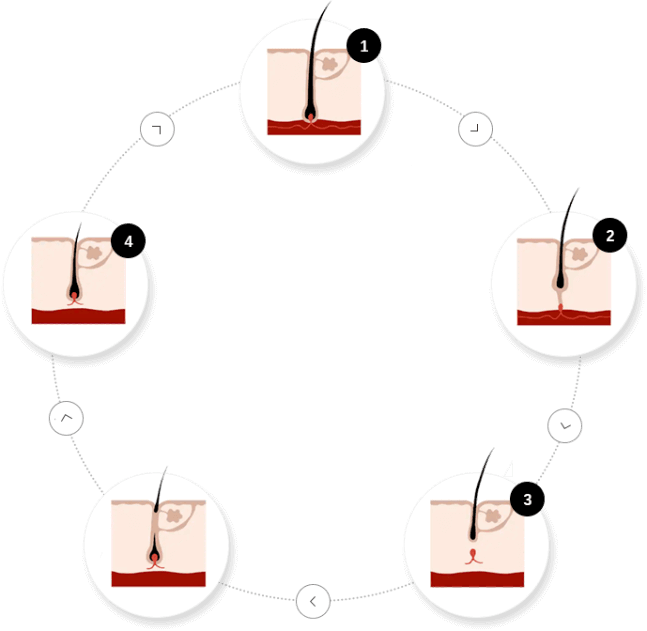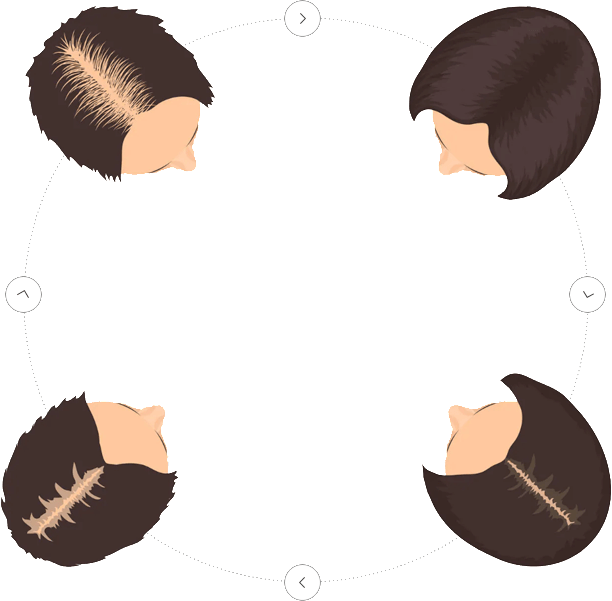Stages of Hair Loss
Hair loss, a widespread concern affecting both men and women, often prompts the search for effective solutions. While there are various options available, a comprehensive understanding of hair growth and factors influencing hair loss is crucial.
This includes dietary considerations, hormonal changes, and genetic predispositions. In this context, SmartGraft, an advanced hair transplant technology, offers a promising solution.
Exploring Hair Loss: Causes and Factors
Hair loss can often be a result of internal changes in the body. Factors like stress, dietary habits, illnesses, or hormonal fluctuations can contribute to hair thinning. Iron and protein deficiencies, for instance, are common culprits.
Additionally, sensitivity to androgens (hormones found in both genders) plays a significant role, especially in male pattern baldness. Women's hair loss, however, can be more complex, influenced by medical conditions, hormonal imbalances, or even physical hair strain.
Hair Growth Phases: An Overview
Understanding hair growth involves recognizing its four key stages:
- Anagen (Growth Phase): This phase sees the majority of hair actively growing.
- Catagen (Transition Phase): Here, hair growth ceases and follicles detach from the nourishing blood supply.
- Telogen (Resting Phase): During this stage, hair follicles rest, and about 10-15% of hair is in this phase at any given time.
- Exogen/Anagen (Shedding/New Growth Phase): Old hair sheds, making way for new growth.

ENQUIRE ONLINE
Using this form to enquire online, this is the fastest way to ensure your enquiry reaches the best person in our team as quickly as possible.
The Hamilton-Norwood Scale: Measuring Male Pattern Baldness

Developed by James Hamilton and later revised by O'Tar Norwood, this seven-stage scale is a crucial tool for gauging male pattern baldness.
- Stages 1-3: Early stages with minimal hair loss, primarily around the temples.
- Stage 4: Noticeable baldness with thinning at the crown or hairline.
The Ludwig Scale: Understanding Female Hair Loss

Female hair loss, unlike its male counterpart, often manifests as a diffuse thinning across the scalp rather than a receding hairline or bald patches. To address this unique pattern, the Ludwig Scale was developed as a specialized tool for classifying female pattern baldness.
This scale, introduced by Dr. Elise A. Ludwig, revolutionized the understanding of women's hair loss by providing a clear, standardized method for assessment. It features three distinct grades, each representing the severity of hair thinning and the extent of visible scalp. Grade 1 indicates minimal thinning, Grade 2 shows moderate thinning, and Grade 3 is characterized by extensive thinning with a significant portion of the scalp becoming visible.
The Ludwig Scale has been instrumental in the medical field, particularly in dermatology and trichology, for diagnosing and determining the progression of female pattern hair loss. Its development brought much-needed attention to women's hair loss, which had been relatively under-acknowledged compared to male pattern baldness.
By providing a clear framework for classification, the Ludwig Scale has aided clinicians in not only diagnosing the condition but also in crafting targeted treatment plans. This scale continues to be a vital tool in both research and clinical practice, contributing significantly to the understanding and management of female hair loss.
SmartGraft: A Modern Approach to Hair Restoration
SmartGraft leverages advanced technology to address hair loss efficiently and effectively.
By transplanting individual hair follicles, it offers a minimally invasive solution with natural-looking results. Ideal for both men and women, SmartGraft tailors its hair transplant approach to suit various stages of hair loss, aligning with the Hamilton-Norwood and Ludwig scales.
